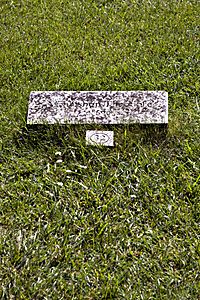Theodore of Tarsus facts for kids
Quick facts for kids Theodore of Tarsus |
|
|---|---|
| Archbishop of Canterbury | |

Stained glass depiction of Theodore of Tarsus at St John the Evangelist Church, Liverpool.
|
|
| Reign ended | 19 September 690 |
| Predecessor | Wighard |
| Successor | Berhtwald |
| Orders | |
| Consecration | 26 March 668 |
| Personal details | |
| Born | 602 |
| Died | 19 September 690 |
| Buried | Canterbury |
| Sainthood | |
| Feast day | 19 September |
| Venerated in | Catholic Church Eastern Orthodox Church Anglican Communion |
| Canonized | Pre-Congregation |
Theodore of Tarsus (born 602, died September 19, 690) was an important leader in the Christian church. He served as the Archbishop of Canterbury from 668 to 690. Theodore grew up in a city called Tarsus. He later moved to Constantinople and then to Rome.
He became Archbishop of Canterbury because Pope Vitalian asked him to. Theodore is most famous for making big changes to the English Church. He also started an important school in Canterbury.
Contents
The Early Life of Theodore
Theodore was of Greek background. He was born in Tarsus in Cilicia, which was a Greek-speaking area of the Byzantine Empire. When Theodore was a child, there were many difficult wars. The Byzantine Empire fought against the Persian Sassanid Empire.
Persian forces took over Tarsus when Theodore was about 11 or 12 years old. This means Theodore likely learned about Persian culture. He probably studied in Antioch, a city known for its special way of studying the Bible. Theodore also knew about Syriac culture, its language, and its books. He might have even visited Edessa.
Later, Muslim armies reached Tarsus in 637. This event likely made Theodore leave his home city. He would have been about 35 years old then. Theodore went back to the Eastern Roman Empire. He studied in Constantinople, the capital city. There, he learned about many subjects. These included astronomy, how to calculate the date of Easter, medicine, and Greek philosophy.
Before the 660s, Theodore traveled to Rome. He lived there with other monks from the East. In Rome, he learned about Latin literature, both religious and non-religious.
In 664, a meeting called the Synod of Whitby decided that the English Church would follow Rome. In 667, the position of Archbishop of Canterbury became empty. The person chosen for the job, Wighard, sadly died. So, Pope Vitalian chose Theodore to be the new archbishop. Theodore was 66 years old at this time.
Theodore became Archbishop of Canterbury in Rome on March 26, 668. He arrived in England on May 27, 669.
Theodore as Archbishop of Canterbury
When Theodore arrived, he looked at the state of the English church. He appointed new bishops to areas that had no leader for a while. Then, he called a meeting called the Synod of Hertford in 673.
At this meeting, they made new rules. These rules were about how to correctly calculate Easter. They also set rules for bishops' power and for monks who traveled. They decided to hold regular meetings and made rules about marriage.
Theodore also wanted to divide the large area of Northumbria into smaller parts. This idea caused problems with Wilfrid, who was the Bishop of York. Theodore removed Wilfrid from his position in 678. He then divided Wilfrid's large church areas. Their disagreement continued until it was settled in 686 or 687.
In 679, Aelfwine, the brother of King Ecgfrith of Northumbria, died in a battle. Theodore stepped in to stop the war from getting worse. He helped bring peace between the two kingdoms. King Æthelred of Mercia paid money to make up for Aelfwine's death. This payment was called weregild.
The Canterbury School
Theodore and another leader named Hadrian started a school in Canterbury. This school taught both Greek and Latin. It led to a "golden age" of learning in Anglo-Saxon England.
Many students came to the school. Theodore and Hadrian taught them a lot every day. They taught about the Holy Scriptures, poetry, astronomy, and how to figure out the church calendar. People said that these were the happiest times since the English people settled in Britain.
Theodore also taught sacred music. He brought new texts and knowledge about Eastern saints to England. He might have even introduced the Litany of the Saints to the West. This was a big change in church services. Some of Theodore's ideas are found in notes taken by his students. These notes are called the Biblical Commentaries.
Another important text, the Laterculus Malalianus, is now thought to be written by Theodore. It shows his wide knowledge from different parts of the Mediterranean world. A record of what Theodore and Hadrian taught is kept in the Leiden Glossary.
Students from the Canterbury school became leaders in churches across southern England. They helped spread the teachings of Theodore.
Theodore called other church meetings. In September 680, he held one in Hatfield, Hertfordshire. This meeting confirmed the English Church's beliefs. Around 684, another meeting was held at Twyford. Theodore also created a book of rules for penance, called a penitential. This book is still around today.
Theodore died in 690 when he was 88 years old. He had been the Archbishop for 22 years. He was buried in Canterbury at a church now known as St Augustine's Abbey.
Honoring Theodore
Like other Archbishops of Canterbury before him, Theodore is honored as a saint. His saint's day is September 19 in the Catholic Church. This day is also recorded in the Roman Martyrology. Canterbury also celebrates his ordination day on March 26.
See also
 In Spanish: Teodoro de Tarso para niños
In Spanish: Teodoro de Tarso para niños


